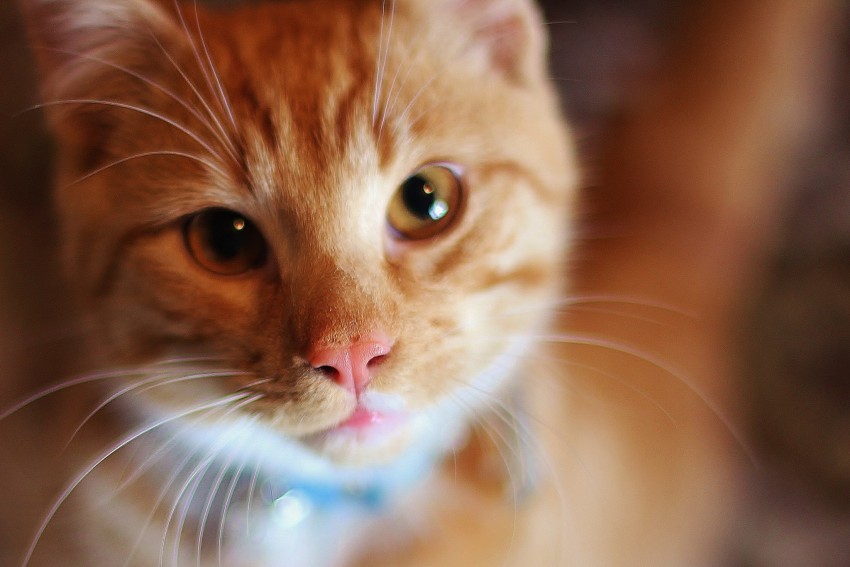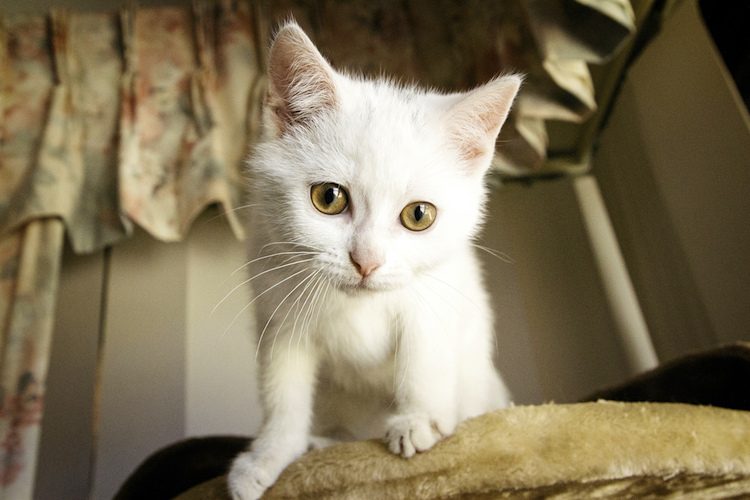
How many cats will have kidney disease during their lifetimes?
The answer is 1 in 3, and cats age 15 or older have a 1 in 2 chance of suffering from kidney disease.
It’s easy to get depressed about your cat succumbing to kidney problems, but this shouldn’t be the case. In fact, when kidney disease is detected early, there’s every chance that appropriate management will help your cat live for many more years.
Symptoms of Kidney Problems in a Cat
The trick is to find out early if there’s a problem and then take control.
Think of this as being like the doctor monitoring your blood cholesterol levels. If your doctor spots a rise, you can change your diet or start statins and drastically reduce the risk of complications.
If your cat ever exhibits any of these symptoms, you’ll know to get veterinary help immediately.
1. Drinking much more water than usual.
This is the first symptom most people notice, and it can be mistaken for thinking the cat is too warm or a little stressed because of a move or the inclusion of another pet in the family. If your cat begins to drink excessively, it is a problematic sign. Contact your trusted vet for an appointment.
2. Excessive urination.
This is the second most commonly noticed symptom. You’ll notice this when you have to clean the litter box more frequently. With an increased intake of fluids, the cat will urinate often. Usually, by the time this symptom is noticed, 75% of the kidneys is not functioning.
3. Lack of appetite.
This is another possible symptom of your cat experiencing kidney failure.
Here’s a quick list of some of the signs of kidney disease in a cat:
- Increased thirst
- Weight loss
- Bad breath
- Vomiting
- Poor coat condition
- Mouth ulcers
These symptoms can be vague, and other conditions can cause similar symptoms, but they should indicate that a vet check is necessary.

Congenital Kidney Disease in Cats
The word “congenital” means something that is present at the time of birth.
Because of spare renal capacity, a kitten with a congenital kidney disease may lead a normal life for several years and become sick only in later life.
Potentially any part of the kidney may not form properly in the womb, and the list of congenital issues is a long one that includes, for example, problems with the blood supply (renal telangiectasia) or the “meaty” part of the kidney (renal dysplasia).
The kidney may be incorrectly plumbed in (ectopic ureter), have a form of early onset cancer (nephroblastoma) or not be able to function correctly (congenital nephrogenic diabetes insipidus).
But of all the congenital kidney diseases, 2 are by far the most common:
- Polycystic kidney disease (PKD)
- Amyloidosis
Congenital disease can come about because of genetic disease, or because the pregnant mother acquired an infection or had contact with a chemical that causes birth defects.
Was YOUR Pet Food Recalled?
Check Now: Blue Buffalo • Science Diet • Purina • Wellness • 4health • Canine Carry Outs • Friskies • Taste of the Wild • See 200+ more brands…

A disturbance in the normal process of assembling the fetal kidney results in the organ being imperfectly made. Because the kidney is designed for a lifetime of use, it has a significant amount of spare capacity. However, with congenital kidney disease, the kitten is born with “short-dated” kidneys that run out of healthy tissue way ahead of schedule.
From the list of possible congenital conditions, the common PKD has arisen as an unhappy result of inbreeding to produce breed characteristics in pedigrees.
- Thus, PKD is especially common in the Persian and certain exotic shorthair cats.
- Amyloidosis is more common in Abyssinian, Siamese and Oriental shorthair cats.
Screening and responsible breeding are vital to avoid breeding from individuals carrying genes for PKD. Unfortunately, there is no substitute for a wide gene pool when trying to reduce the risk of congenital diseases.

Existing Tests for Kidney Disease in Cats
The problem with kidney disease in cats and other animals is that the existing tests (including blood creatinine) aren’t particularly sensitive.
You may be shocked to learn that blood creatinine levels leave the normal range only once a cat has lost 75% of their kidney function.
In other words, your cat is functioning on just half a kidney before we know anything about it. If you’re a glass-half-full person, it’s wonderful how efficient our organs are, but if you’re a glass-half-empty person, this is alarming news.
However, there’s a new blood test that picks up kidney disease far sooner. This is great news because, just like with our own blood cholesterol, if we pick up the signs early, we can change the cat’s diet, protect the kidneys and delay deterioration.
The New Test for Kidney Disease in Cats
The new test is called symmetric dimethylarginine (SDMA).
It works by measuring proteins released from damaged tissues. These proteins are filtered and discarded by the kidney, and with healthy kidneys the levels are low. But when 40% of kidney function has gone, the blood levels rise.
Now, if you’re thinking that 40% damage still seems high, think what happens when people become a living organ donor. These people donate 1 of their 2 kidneys, instantly reducing kidney function by 50%, and yet they remain fit and well. In other words — we carry a spare, so a 40% reduction is no big deal.
However, what SMDA flags is an early warning that allows us to protect those precious kidneys.
By adjusting the diet so the kidneys have less work to do, we can significantly protect the kidneys. This means, in most cases, you can stall or drastically delay further deterioration.

Get Your Cat Tested for Kidney Problems
Ask your veterinarian. It’s just a simple blood draw, much like any other blood test.
It’s a great idea to test any cat age 8 or over, because this is the age at which problems start to set in.
Until now, vets have reached a diagnosis based on late-stage tests such as:
- Blood creatinine: Above normal once 75% function is lost.
- Urine concentration: Urine becomes weaker once 60% function is lost.
Diagnosis of Chronic Kidney Failure
Your vet will draw blood and collect urine from the cat and then evaluate the results. The cat will probably need to spend the night at the vet’s office for observation.
It’s devastating for the pet’s family to hear the vet diagnose the cat chronic renal failure, a progressive and incurable disease.
Although some cats live for months or even years without any additional problems, others die quickly from this condition.

Treating Kidney Disease in Cats
The kidney is a filter — it gets rid of naturally occurring toxins that are the waste products of digestion.
However, diseased kidneys can struggle to cope, and then the level of toxins build up in the bloodstream (this is what the blood creatinine test measures).
These toxins make the cat thirsty and feel unwell. Also, a downward spiral begins where the kidney sustains further damage as it struggles with an increased workload.
Key to protecting the kidneys is giving them less work to do — hence the importance of prescription renal diets:
- Examples include Hills K/D, Purina’s NF and Royal Canin’s Renal Support foods.
- They are low in minerals that cause scar tissue to develop and contain high-quality protein in reduced quantities.
- The proteins are “purer,” and once digested, they are lower in waste products, which puts less strain on the kidney.
In the early stages of kidney disease in cats (detectable by SDMA), a simple diet change may be all that’s required to stall deterioration for quite some time.
In later stages, medications may be added that assist kidney function as well as food additives that further reduce phosphate levels absorbed from the gut.
Know that early detection of kidney problems puts you in control, and you do not have to fear the diagnosis.
Reference
- Small Animal Internal Medicine. Nelson & Couto. Publisher: Mosby.
This pet health content was reviewed for accuracy by a veterinarian, Dr. Pippa Elliott, BVMS, MRCVS. It was last reviewed and updated Feb. 4, 2019.



